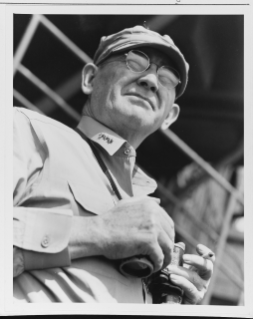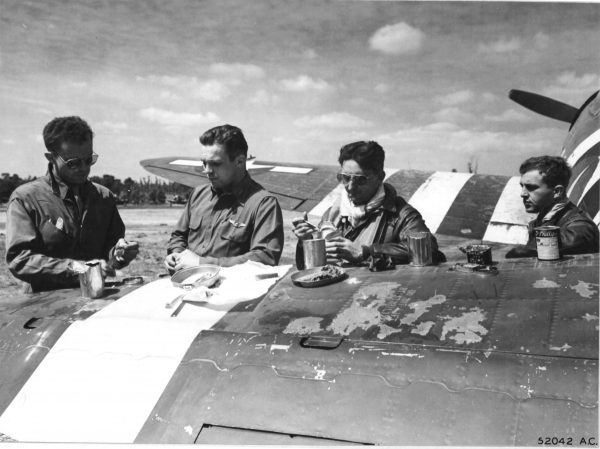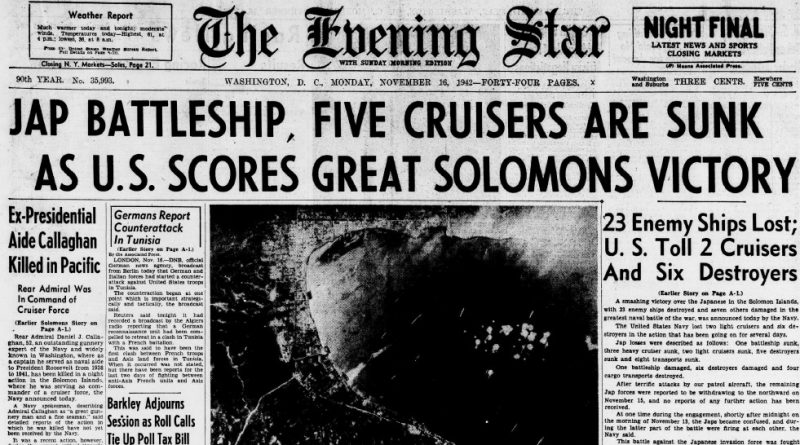World War II Chronicle: November 16, 1942
Click here for TODAY’S NEWSPAPER
The Naval Battle of Guadalcanal marks the first time battleships faced each other in a surface engagement and U.S. forces inflicted heavy losses on the Imperial Japanese Navy. We do not yet know the full extent of the damage done to the enemy (see today’s Naval War Communique, but it appears that the landing has been smashed and remaining Japanese ships are steaming north.
The front page reports that Rear Adm. Daniel J. Callaghan, former Naval aide to Pres. Roosevelt, is the second flag-grade officer killed in combat during World War II (Rear Adm. Isaac Kidd, commander of Battleship Division One during the Pearl Harbor attacks was the first)… The U.S. fleet was almost wiped out; the Japanese had destroyed the destroyer screening force and knocked out the battleship USS South Dakota on the second night of fighting, leaving only USS Washington to hold the line. South Dakota has an electrical failure that knocked out her radar, guns, and radio so Washington couldn’t determine which of the ships was friendly (the Japanese did not have radar so Washington went undetected). American gunners figure out which ship to fire on once the Japanese battleship Kirishima spotlights South Dakota to finish her off, decimating the Japanese ship at point-blank range. Kirishima quickly capsizes and sinks in Ironbottom Sound.

Rear Adm. Willis A. “Ching” Lee, commander of Battleship Division Six, had his flag aboard Washington and was a sharpshooter well before the invention of radar-controlled guns. He was on the Naval Academy’s rifle team and used his skills to kill enemy snipers during the Veracruz campaign. He competed in the 1920 Olympics, winning five Gold medals, a Silver, and a Bronze for shooting. Other members of his team: Fellow Naval Academy graduate Capt. Carl T. Osburn competed in three Olympic games and won more medals (11) than any American male until Michael Phelps. Osburn retired in 1939 but was recalled for World War II and served as war plans officer of the 12th Naval District in San Francisco. Gunnery Sgt. Morris Fisher retired from the Marine Corps in 1941 but was recalled to be a shooting coach at Parris Island during World War II. Both Osburn and Morris are in the USA Shooting Hall of Fame. Other teammates: Irish-born Army Master Sgt. Dennis Fenton, Marine Capt. Joseph Jackson, Army Sgt. 1st Class Lawrence A. Neusslein, Army Capt. Arthur D. Rothrock, Marine Gunnery Sgt. Oliver M. Schriver, and Army 1st Lt. Lloyd S. Spooner.
Also on the front page is a brief mention of an American strike on German targets in Occupied Europe. The mission is led by 1st Lt. Eugene M. Potter, who entered the Royal Canadian Air Force in 1940 and was one of the American pilots that formed No. 71 (Eagle) Squadron. By now Eagle Squadron pilots are flying for the U.S. Army Air Force, and TIME magazine has an article this month on the handover. Potter, currently flying Spitfires for the 334th Fighter Squadron, will perish in a July 1944 collision with a Luftwaffe fighter over France…

Page eight names Pvt. John T. MacKall as the first American soldier to die at Allied headquarters in Gibraltar. MacKall served in 2nd Battalion, 503rd Parachute Infantry Regiment and was mortally wounded when French fighters attacked his transport plane while attempting to land at Oran. Seven soldiers were killed on the scene and several others were wounded. MacKall passed away on Nov. 12 and Camp MacKall was named in his honor. Beginning in 1943, several airborne units are formed at MacKall, which sits some 55 miles west of Fort Bragg, N.C. and the facility is now called the home for Special Forces training… George Fielding Eliot column on page 12… Sports section begins on page 19… The “Philippine Escape” series concludes on page 33… Story on air force glider operations on page 37
Evening star. (Washington, D.C.), 16 November 1942. Chronicling America: Historic American Newspapers. Lib. of Congress.
https://chroniclingamerica.loc.gov/lccn/sn83045462/1942-11-16/ed-1/
